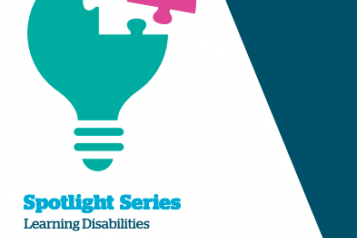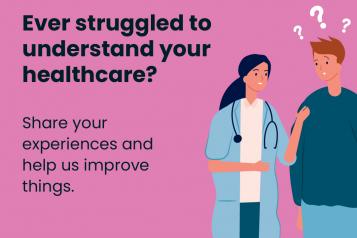Accessibility to healthcare can vary significantly based on the needs of the individual.

According to surveys conducted between January and June 2023, 68% of all respondents reported they can only book a GP appointment using the phone. 41% of people who stammer reported they find it ‘very difficult’ using the phone to book an appointment. This compares with 23% of people who don’t stammer.
Survey respondents who stammer reported that they had been hung up on, misunderstood, rushed, laughed at, or simply not given enough time to explain their needs. 54% said they experienced mental distress around using the phone to book appointments.
Read our full report here

People with visual impairments are the second group of people with affected ability to access services in a variety of ways and manners.
Because visual impairments are often a hidden disability, support is often not offered unless the healthcare provider is aware of the patient’s needs or has worked with the patient before.
There is evidence that despite the changes that the Accessible Information Standard of 2016, the Equality Act 2010 and Disability Discrimination Act 1995 have slowly brought in there is still a lot of poor practice, ignorance and discrimination against people who are visually impaired. Evidence has also shown that some staff are overconfident in their ability to provide proper accommodating access and treatment to those with a visual impairment. Evidence shows that staff seem most understanding of the movement side of the effects of a visual impairment but are less aware of the other effects a person with it might have. Further evidence shows training is needed to improve staff’s understanding of the prevalence of vision loss and visual impairment and that flagging up a person's condition on their patient record tends to improve the service and care they receive.
There are concerns that people with sight loss are less likely to attend routine medical appointments across all services compared to their able sighted people. This is a particular concern if the person has other chronic conditions particularly if that condition is linked to their sign loss, such as diabetes. There is also a concern that patients are receiving poorer quality and quantity of information because of access issues caused by their visually impaired status.
Other difficulties often seen as a barrier people with visual impairment might face to accessing healthcare services include:
-
Physical disability or inability to travel to treatment and/or navigating inside the building.
-
Communication Barriers - not being able to read printed information.
-
Procedural Barriers - not being able to fill in forms or fill in an online check in.
-
Medical Barriers - not being able to tell visual symptoms of an illness or disease.
-
Personal Barriers - Dealing with discrimination and lack of support.
Training is being offered to teach staff the law, statistics and how to help care for people with visual impairments.
Audits are also happening to check how services are caring for patients with visual impairments. These have found the numbers of visually impaired people are being underestimated for clinical staff, but training improved the understanding staff have.
There is also evidence of widespread ignorance in how to communicate with someone who is visually impaired. For example, many people overestimate the percentage of the visually impaired community are fluent in reading Braille. Audio description and large print are used more widely.
Evidence shows that clinical staff are aware of the mobility issues visually impaired people have and have done stuff like removing trip hazards for example. Staff are less aware of the information and communication issues visually impaired people may have.
Neurodiverse people are another big group which face many challenges in accessing healthcare. The most reported challenges include:
-
Challenges in booking an appointment particularly if it must be done via a telephone.
-
Undertaking a telephone appointment.
-
Travelling to an appointment.
-
Navigating large hospital buildings.
-
Dealing with a sensory overload.
-
Dealing with personal information
-
Being allowed to bring support with them.
-
Attitude of staff.
-
Feeling of not being listened to.
-
Lack of consistency,
To read more about Neurodiversity and to download resources click here
Another group facing difficulties in accessing healthcare services are people whose English is not their first language.
It has been shown through research that language is the dominant factor affecting access to healthcare for those from ethnic minority backgrounds. This is despite the GMC (General Medical Council) stating that arrangements much made to accommodate patients unable to fully communicate in spoken English. However, research show’s difficulties often occurs and the usage of informal translation from families and friends widespread. Some areas use external for-profit interpreting services while others use not for profit services. Because of the strict ten minute duration for a GP appointment translation time either means less clinical time or delays and cuts to other patient's time - this is particularly an issue if the GP has many non-English speaking patients. There are also concerns about the lack of monitoring and research into this issue and there has been calls for monitoring of this issue to become mandatory.
Translation issues are a major part of the problem in terms of accessing healthcare. Using informal translation can have consequences in terms of privacy and respect for the patient's dignity. And many patients who cannot speak English prefer a same sex translator for cultural or privacy reasons which adds to the issues of getting access to healthcare.
Concerns were raised by Healthwatch research into patients' poor technology understanding affecting the use of tech to translate.
The Covid -19 pandemic was said to have made some of the issues worse. Meanwhile a lack of awareness of interpreters was seen as an issue particularly for non-hospital care.
Research has found improvements are needed in how to note down language difficulties to improve access.
To read more on Healthwatch Kent involvement with improving the implementation of Accessible Information Standard work in East Kent Hospitals please click here


